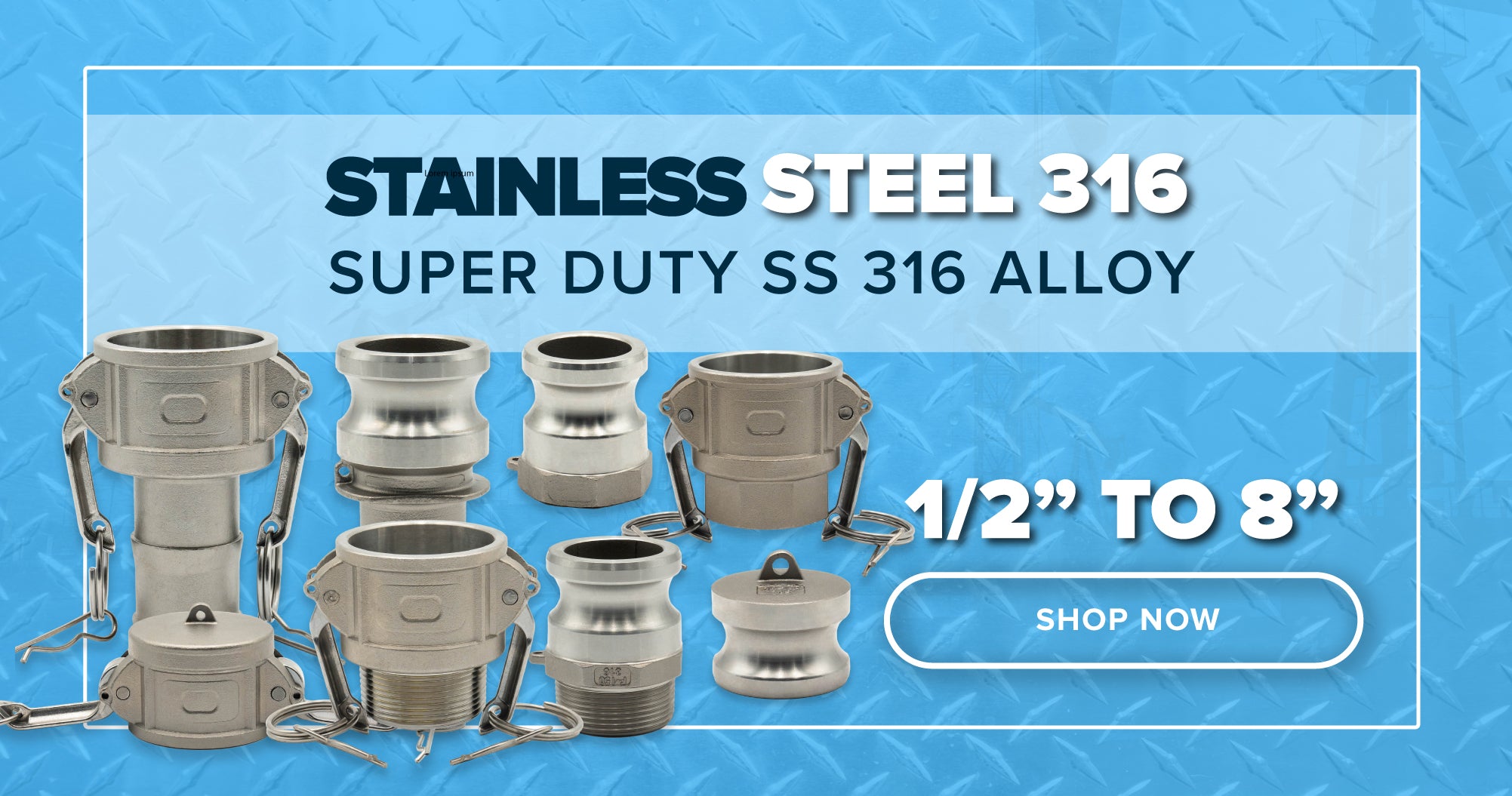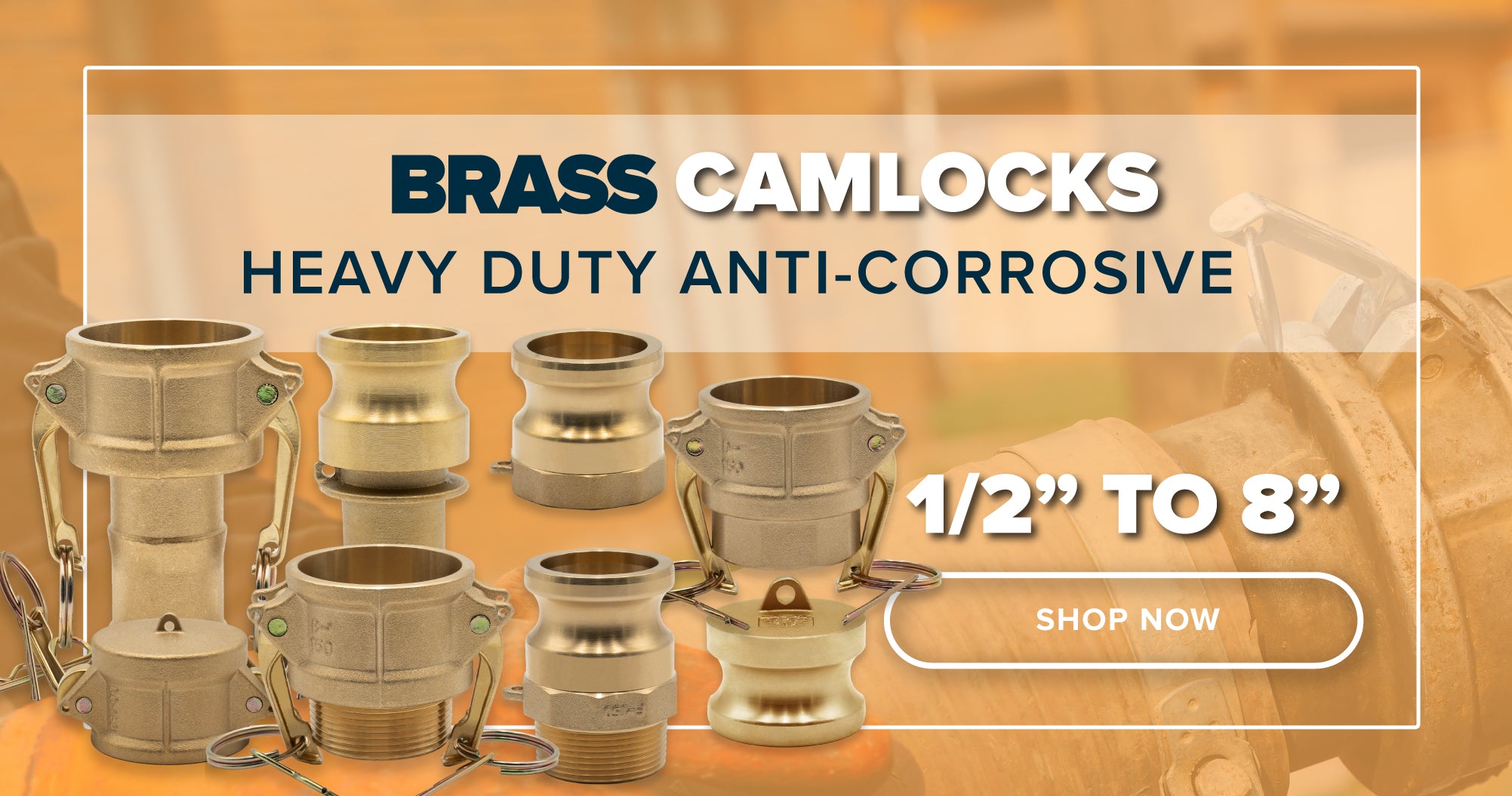Camlock fittings, also known as cam and groove couplings, are versatile and widely used industrial components that enable quick and secure connections between hoses, pipes, and other fluid-handling equipment. These fittings play a crucial role in various industries, including manufacturing, agriculture, petrochemicals, food and beverage, and many others. In this comprehensive explanation, I'll delve into the workings, types, applications, advantages, and considerations associated with camlock fittings.
Introduction to Camlock Fittings: Camlock fittings are designed to facilitate rapid and efficient fluid transfer without the need for specialized tools or extensive manual labor. The primary principle behind their operation is the use of a pair of complementary components: the "male" adapter and the "female" coupling. These components have a unique design that involves a cam groove and a locking arm mechanism.
Working Principle: The working of camlock fittings is relatively straightforward. The male adapter, often referred to as the "cam" or "male end," features a projecting arm with a curved cam profile. The female coupling, also known as the "groove" or "female end," contains a corresponding groove that matches the shape of the cam arm.
To connect the two components, the operator inserts the male adapter into the female coupling and then rotates the cam arm. This rotation engages the cam profile with the groove, creating a secure and leak-resistant connection. The locking arm ensures that the components remain locked together, even under pressure, preventing accidental disconnections.
Types of Camlock Fittings: Camlock fittings come in a variety of materials, sizes, and configurations to suit different applications and environments. The most common materials include stainless steel, aluminum, brass, and polypropylene. These fittings are available in multiple sizes, ranging from 1/2 inch to several inches in diameter, enabling connections for various flow rates.
There are several types of camlock fittings based on the type of connection they offer:
- Type A: Male adapter with a female NPT thread.
- Type B: Female coupling with a male NPT thread.
- Type C: Female coupling with a hose barb.
- Type D: Female coupling with a female NPT thread.
- Type E: Male adapter with a hose barb.
- Type F: Male adapter with male NPT thread.
- Type DC: Dust cap used to cover the female coupling.
- Type DP: Dust plug used to cover the male adapter.
Applications of Camlock Fittings: Camlock fittings find applications in a wide range of industries due to their efficiency, ease of use, and versatility. Some common applications include:
- Industrial Manufacturing: Used for fluid transfer in manufacturing processes.
- Agriculture: Facilitate the movement of water, chemicals, and fertilizers.
- Oil and Gas: Transfer of liquids and chemicals in petrochemical facilities.
- Food and Beverage: Suitable for hygienic transfer of liquids in food processing.
- Chemical Processing: Transport of chemicals and solvents.
- Pharmaceuticals: For transferring fluids in controlled and sterile environments.
Advantages of Camlock Fittings: Camlock fittings offer numerous advantages that contribute to their widespread use:
- Quick Connections: Speeds up the assembly and disassembly of fluid systems.
- Versatility: Available in various materials and sizes for diverse applications.
- Leak Prevention: Secure locking mechanism minimizes fluid leakage.
- Ease of Use: No specialized tools required; easy for operators to learn.
- Interchangeability: Components of the same size are compatible regardless of material.
- Reduced Downtime: Fast connections result in decreased setup and maintenance time.
Considerations and Best Practices: While camlock fittings offer several benefits, there are considerations and best practices to keep in mind:
- Material Selection: Choose the appropriate material for the intended fluid and environment to prevent corrosion or contamination.
- Pressure and Temperature Ratings: Ensure that the fittings can handle the pressure and temperature of the fluid being transferred.
- Compatibility: Use components of the same size and type to ensure a proper fit.
- Inspect for Wear: Regularly inspect components for wear, damage, or deformation that could affect the sealing capability.
- Proper Handling: Follow manufacturer guidelines for proper usage and handling to prevent accidents and maintain efficiency.
- Safety: Be cautious with hazardous fluids and ensure proper grounding to prevent static discharge.
Camlock fittings are essential components for rapid fluid transfer in various industries. Their simple yet effective design, coupled with a range of materials and configurations, make them a versatile choice for connecting hoses, pipes, and equipment. By understanding their working principles, types, applications, advantages, and considerations, operators can make informed decisions when using camlock fittings in their operations, promoting efficiency, safety, and reliability.







